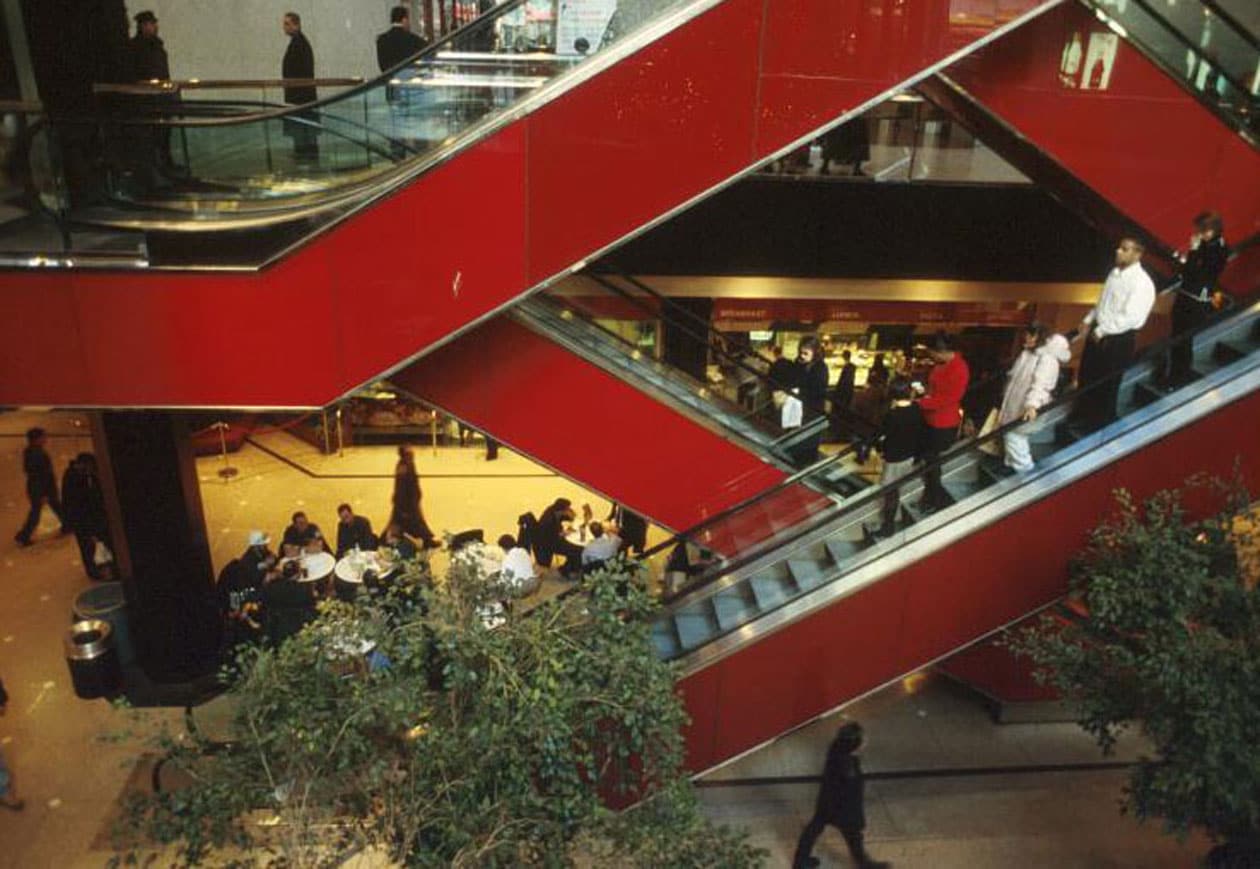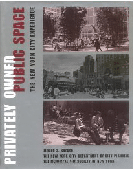
875 Third Avenue
Four well-coordinated public spaces join forces to invigorate this full blockfront office tower on the east side of Third Avenue between East 52nd and 53rd Streets. An open space occupies the triangular area at the southeast corner of Third Avenue and East 53rd Street. A public circulation space inside the building connects users from the open space to the three-level covered pedestrian space. Miniscule arcade spaces cover the entrances to the covered pedestrian space at the northeast corner of Third Avenue and East 52nd Street and on East 53rd Street east of Third Avenue.

Of the four, the covered pedestrian space is the main attraction. In some respects, it is similar to the space at the Crystal Pavilion building two blocks south. It operates on three levels, including ground, concourse, and mezzanine levels. It has a three-story open core that is partially enclosed by glass skylight to the northwest. Its ground level serves mostly as a circulation corridor, creating a shortcut from the northeast corner of Third Avenue and East 52nd Street northeast to East 53rd Street while providing access in the middle via criss-crossing bright red-paneled escalators to concourse and mezzanine levels. At the concourse level, eight types of food outlets purvey their wares to large lunchtime crowds seated at the plentiful movable tables and chairs. A flower shop adds color, and a piano stands at the ready. The mezzanine level above surrounds the core and furnishes more tables and chairs.
There are a number of differences, however, between this space and the one at Crystal Pavilion that hold important lessons for the planning and design of covered pedestrian spaces. Although this one lacks Crystal Pavilion’s surface sizzle — indeed the red-and-black color scheme seems plain by comparison — it nonetheless hosts a level of activity unseen down the street. The explanations are easy to unearth. To begin with, this covered pedestrian space is not an end in itself. Its street level is activated by the stream of employees and visitors who pass through the space to reach the private elevators of the office tower. The concourse level provides access to the subway, an attraction especially important for sunken spaces, whether inside or outside, that inevitably need something extra to generate the foot traffic. Once there, if there is something else to interest passersby, such as food, they will stop, creating more activity that itself draws others.
Another difference between this covered pedestrian space and the one at Crystal Pavilion is its street face. Here, the interior space is not cloaked behind a typical office building entry façade that does everything but tell passersby about the existence of something interesting inside. The open space at Third Avenue and East 53rd Street was created in 1990, after several existing low-rise buildings were demolished in a second development phase. By removing these structures, the design initiated a salutary transparency between outdoor and indoor public experiences, influencing pedestrians to pause for a moment at the movable tables and chairs in front of the café, or to enter the interior space visually evident through the glass wall.
Several other amenities are worth citing. The street-level covered pedestrian space and public circulation space have tables, chairs, and adjacent food service; and it is important to note that members of the public may sit without obligation to purchase anything. The café does have its own seating area, however, northeast of the public circulation space, that it may operate as it chooses. Weekly public events at least one hour in length are scheduled. Two public restrooms are located at the eastern end of the concourse level, behind dark glass doors that the guard must open. At least two guards patrol the spaces.
The operation of these spaces today stands in contrast to a bumpy early history. In 1983, the City brought a court action against the building owner when it leased out two office floors, representing the bonus floor area for the spaces, prior to completing the spaces as described in the special permit and restrictive declaration. The City and owner were able to settle the dispute.


 (10 votes, average: 3.30 out of 5)
(10 votes, average: 3.30 out of 5)
This place used to be nice, until the ENDLESS escalator replacement. It’s been going on for over 7 months now. At this point they should just abandon the idea of escalators and just put in stairs. You can barely have lunch there most days because of the banging and drilling. Who ever is in charge of this project is milking it for all it’s worth. Pathetic.
Thank you for the information. We will look into this and post a comment when we know more about it.
The POPS sign say hours on weekdays are until 11:00 pm but we were kicked out for “closing time” at 8:00 pm today, 2/7/17, a Tuesday. The doors were then locked.
If the Atrium at 875 is a public space and open to persons with disabilities, then why did you install ANTI-HOMELESS SPIKES? It is appalling that APOPS is using hostile architecture to deter those who are in need.
They now ask for photo IDs (and log your information) before you can use the bathroom. I can understand keeping the bathroom doors locked for security and having guards watch them, but this is ridiculous. It’s especially problematic at lunch time because there are so many places to eat there and all the places use the public bathroom. It’s clearly designed to keep some people out of the bathrooms. It’s degrading for everyone.
This location demands identification for use of the bathrooms.